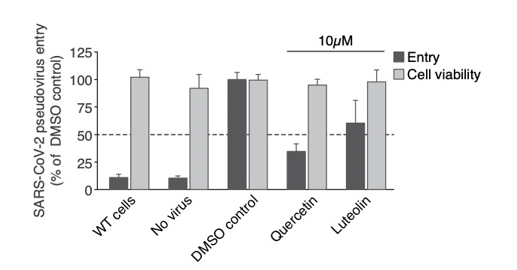Caenorhabditis Elegans as a Model of Radio Adaptive Response and Radiation Induced Bystander Effect
Mini Review
Radio adaptive response and radiation-induced bystander
effect (RIBE) are two contradictory biological effects induced
by low-doses radiation. Radio adaptive response refers to the
resistance to the subsequent damage induced by relatively highdose
radiation after the experimental subjects accept pretreatment
with low-dose radiation. RIBE refers to the phenomenon that nonirradiated
cells or tissues present the biological response like that
in the irradiated cells due to the factors released by irradiated
cells or tissues. Caenorhabditis Elegans (C.Elegans) is an excellent
in vivo model to study those two effects because of its small body
size, transparent body that allows to be well observed and allows
for precise microbeam irradiation, abundant mutant as well as high
radio sensitivity of germ cells.
Sugimoto T, et al. first found that DNA damage-induced cell
cycle arrest and apoptosis were observed in locally microbeam
irradiated regions as well as in the gonad [1]. When exposed to 50
or 70 protons site specific microbeam irradiation, a strong stress
response in the posterior intestine was observed in the posterior
intestine after 24 hours [2]. After quantitative irradiation of the
posterior pharynx bulb and the vulva of C.Elegans by the carbon
ion source or the single particle microbeam, non-targeted radiation
stimulated the cellular DNA damage and the resulting apoptosis
in the distant germ line. Different tissues exhibited different
sensitivities to radiation. Irradiation to vulva, rather than posterior
pharynx bulb, induce more serious injury. There is a system-specific
radiation sensitivity in the RIBE induction and more severe damage
and genomic instability were observed in intra-system RIBE. More
important, RIBE can transmit the damage to the offspring and
increase the instability of the progeny genes. However, DNA damage
response (DDR) pathway is involved in both intra- and inter-system
RIBE. Irradiation induced the production of reactive oxygen species
(ROS) in the radiation site, then, ROS delivered all over the body
and activate the DDR pathway in the distant sites, especially the
germ cells. After that, the cells of failure to repair damaged timely
or mutation will be removed by apoptosis pathways to maintain
the stability of gene [3]. But HUS-1 and MRT-2, damage checkpoint
proteins, function in inter-system RIBE while not in intra-system
RIBE. Besides, the deficiency of ceramide synthase could inhibit
the apoptosis induced by RIBE, which indicated that ceramide
biosynthesis pathway may be involved in this process[4], but the
specific mechanism is unknown.
After irradiation, C. Elegans somatic cells increased the level
of DNA damage in by stand germ cells through MAPK signaling
pathways including ERK, JNK and p38 MAPK, leading to apoptosis
of non-radiated germ cells. Multiple parallel signaling pathways,
such as CEP-1/p53 dependent signaling pathways, may also
involve in the induction of apoptosis by RIBE [5]. After exposure
to ultraviolet radiation or ionizing radiation, CPR-4, a human
cathepsin B lysosomal protease homologue, is the major RIBE
factor, whether intra- or inter-animal RIBE. Irradiation activates
the p53 homologue cep-1, which increases the transcription of
cpr-4, leading to synthesis of more CPR-4 proteins and increasing
secretion of CPR-4, the latter appears to act through DAF-2, insulinlike
growth factor receptor, and its downstream signal complex
PDK-1 kinase, but not transcription factor DAF-16,to exert RIBE [6].
Compared with mammals, C. Elegans need a higher dose of
radiation to induce radio adaptive response, 5 Gy with gammaray
radiation, which does not harm to the growth of C. Elegans.
The radio adaptive response of C. elegans germ cells induced
by low doses of radiation increase the radio resistance of germ
cells, instead of affecting cell cycle [7]. With an adaptive gammaradiation,
it took C. Elegans vulva cells 1.75 h to develop radio
resistance, and this resistance may Persis for only 2-4 h. DNA
damage checkpoints and non-homologous end-joining (NHEJ) were
involved in radio adaptive response in a cellular non-autonomous
manner. NHEJ pathway, one of DNA damage repair pathway, plays
an important role inradioadaptiveresponse, while HR pathway,
another DNA damage repair pathway, were involved in carbon ion
source radiation-induced DNA damage, but not in radio adaptive
response [7,8]. ATM-1, but not HUS-1, were involved in germ lines
radio adaptive response induced by microbeam [7]. Radio adaptive
response and RIBE are the hot top of recent studies, but the specific
mechanism needs to be further clarified. However, there is a certain
relationship between radio adaptive response and RIBE. Bystander
cells activate DNA damage checkpoints by RIBE, then produce radio
adaptive response to subsequent high-dose irradiation [9].
Anti-Epileptic Drugs, Would They be the Cause
of Heterotopic Ossification - https://biomedres01.blogspot.com/2020/02/anti-epileptic-drugs-would-they-be.html
More BJSTR Articles : https://biomedres01.blogspot.com

No comments:
Post a Comment
Note: Only a member of this blog may post a comment.